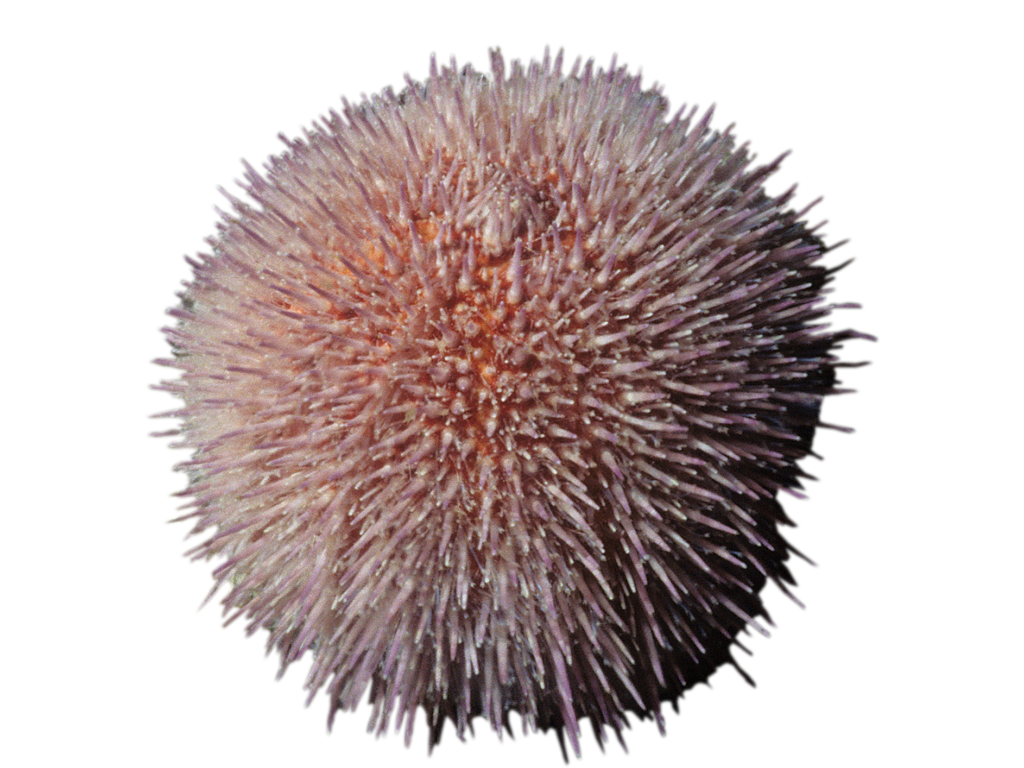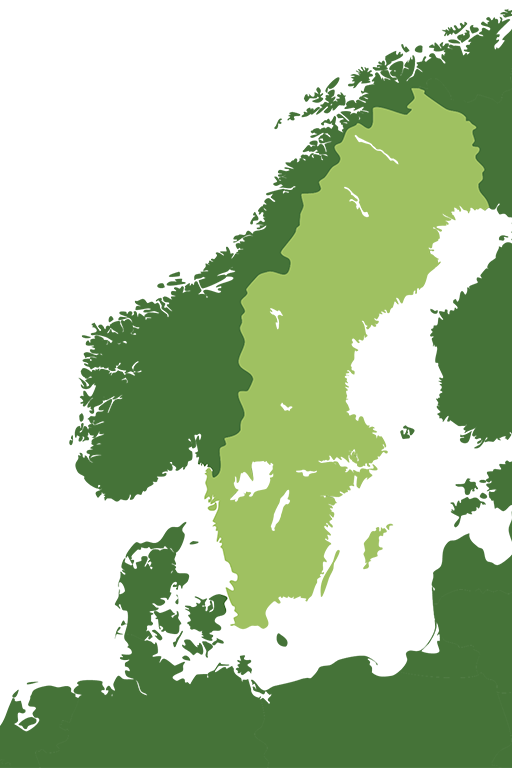Common Sea Urchin
Echinus esculentus

Has teeth on the underside of its body
The common sea urchin, also called the European edible sea urchin, is a round, pink sea urchin and is common on the Swedish west coast. It is the biggest sea urchin in our waters, with a diameter of up to 20 cm.
The sea urchin’s teeth are on the underside of its body. The sea urchin uses them to nibble eagerly on small animals and algae.

Photo: Public domain
Can we eat sea urchins?
Yes, we can – there are many recipes for the common sea urchin. Its gonads are the part we eat. The eggs from females are also eaten. The eggs and gonads are located inside the sea urchin’s shell, collected in pockets along the sides of the shell.
Shell and spines
The sea urchin has a shell and spines, whose main purpose is self-protection. The spines are moveable and are also used by the sea urchin to move about.
Between the spines are moveable tube feet with light-sensitive cells at their ends. The sea urchin uses these to perceive differences in light and movement.
A meal, the eggs and gonads from a Common sea urchin.
Photo: sigusr0-CC-BY-SA
The tube feet along the spines on a Common sea urchin.
Photo: Jerry-Kirkhart-CC-BY.
A Common sea urchin that feeds by rasping algae and invertebrates.
Photo: Bengt-Littorin-CC-BY
Distribution in Sweden

Bohuslän to
Öresund.
White marking = Distribution
Threat based on the Red List

Trade regulations
CITES: Not listed.